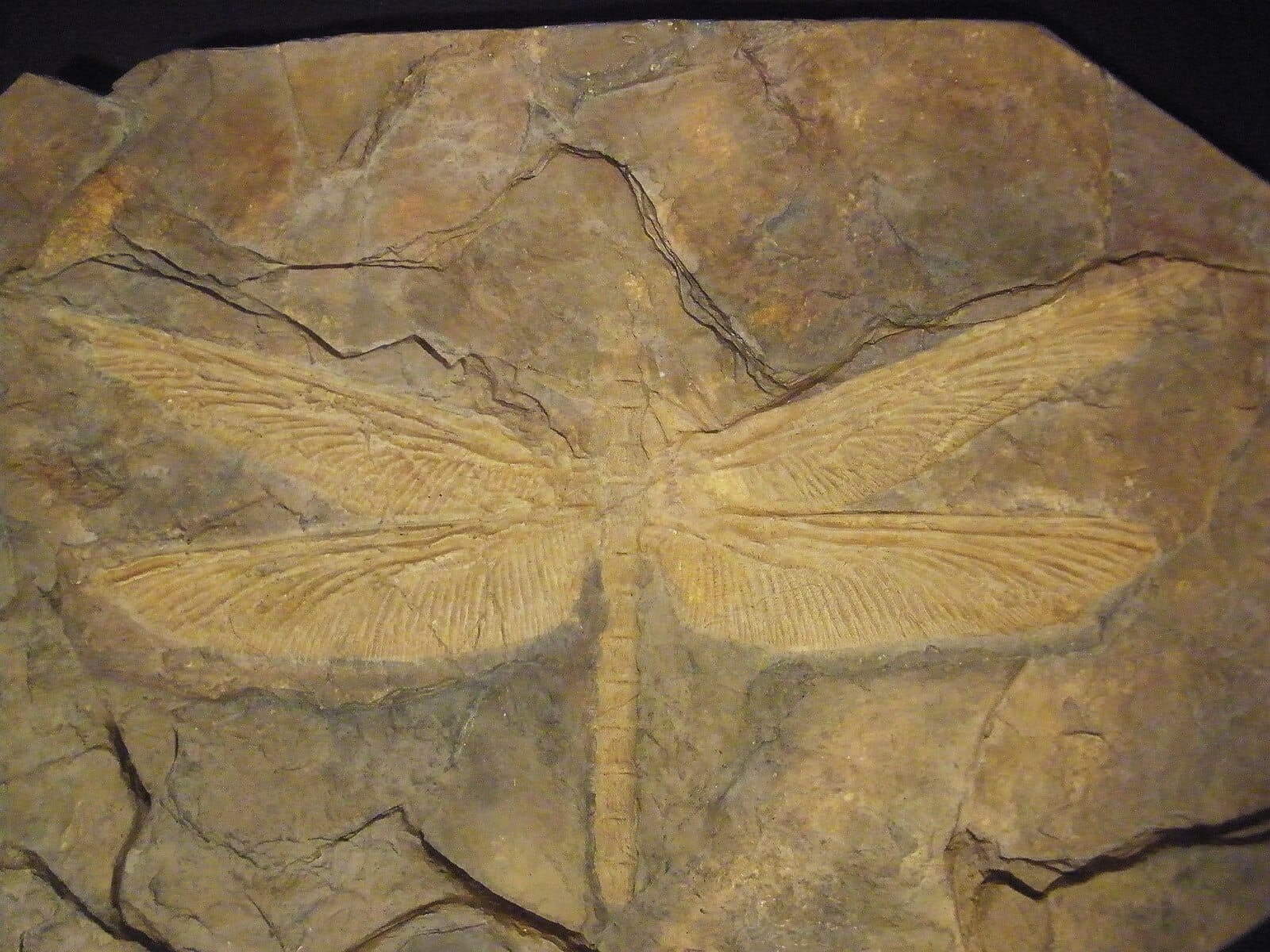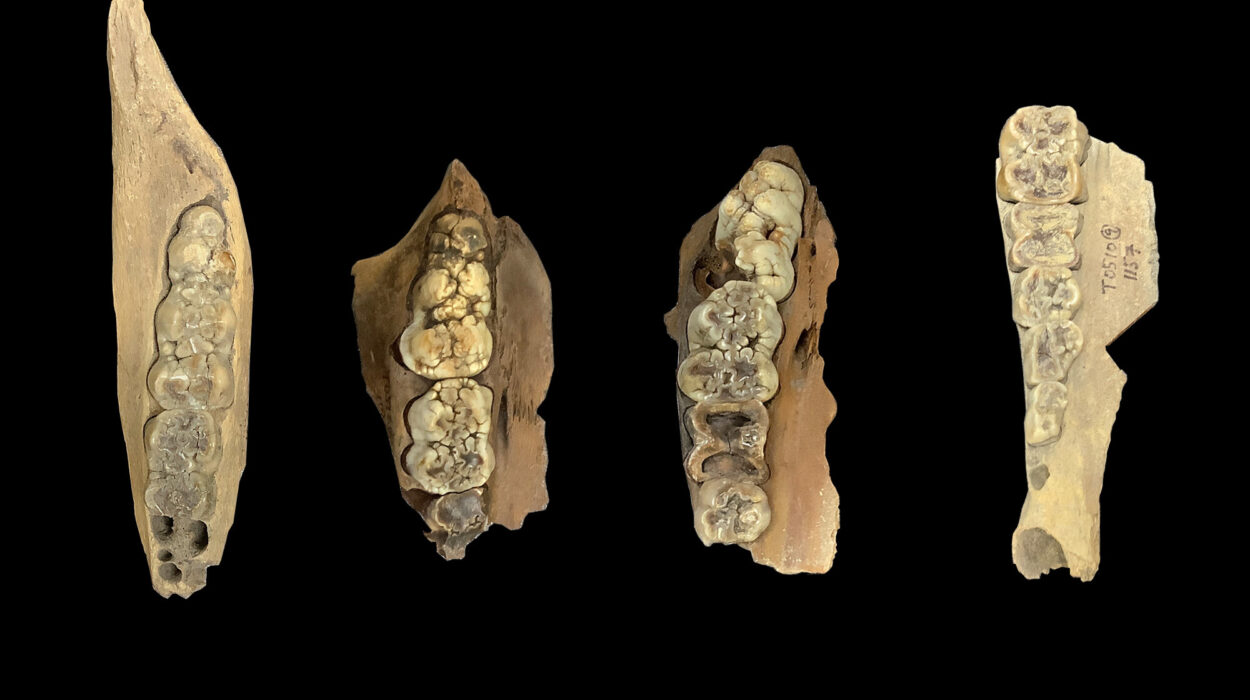Long before humans stood upright, before mammals scurried in the underbrush, and even before dinosaurs thundered across the Earth, there was a time when the sky buzzed not with birds, but with wingspans broader than those of modern hawks—wings belonging to insects. Yes, real insects. Dragonflies the size of seagulls. Millipedes stretching longer than a man is tall. These were not mythical beasts from the minds of fantasy writers, but living creatures whose fossilized remains whisper from the stone like echoes of an ancient, alien Earth.
To encounter these fossils is to step back into a prehistoric dream, one where oxygen thickened the air, and evolution painted its masterpieces on a much grander canvas. The question is not whether giant insects existed—they did—but why. What created this window of gigantism in the Carboniferous and early Permian periods? And just as intriguingly, why did it close?
The fossil record offers clues, fragments of wing and carapace entombed in rock. Each is a message from a lost world where insects ruled the air and forests pulsed with otherworldly life. Understanding these fossils is not just a journey into Earth’s past—it is a key to decoding how life responds to the planet’s ever-changing atmosphere, climate, and ecological balance.
A Breath of Ancient Air
To comprehend why insects once grew so colossal, one must begin not with biology, but with geology—and specifically, with the atmosphere of 300 million years ago. During the late Carboniferous period (roughly 359 to 299 million years ago), Earth was a very different place. Swamps stretched across the continents in a steamy tangle of ferns, horsetails, and club mosses—plants that grew tall and fast, their decay building thick layers of coal that still fuel modern civilization.
These swampy forests released enormous amounts of oxygen, and with no humans or large fires to consume it, atmospheric oxygen levels climbed to unprecedented heights. While today’s atmosphere is composed of about 21% oxygen, estimates suggest that during the Carboniferous it may have reached as high as 35%.
That difference is more than just a number—it’s a vital force. Insects, unlike mammals, don’t have lungs. They breathe through spiracles, small openings in their exoskeletons connected to a system of internal tubes called tracheae. This system works passively, relying on diffusion to bring oxygen to their tissues. The catch? Diffusion is slow, and becomes inefficient as body size increases. Higher oxygen levels, however, supercharged this system, allowing larger body sizes than would otherwise be possible.
The oxygen-rich air created a biological golden age for insects. It was an evolutionary invitation to grow bigger, fly farther, and dominate new ecological niches. And the insects accepted that invitation with astonishing enthusiasm.
The Fossil Giants
Among the most awe-inspiring fossils of giant insects is Meganeura, a genus of griffinfly—an ancient relative of the modern dragonfly. Discovered in 1880 in the coal deposits of France, Meganeura had a wingspan reaching up to 70 centimeters (over two feet). That’s the size of a modern crow or small hawk, only this creature was not a bird but an invertebrate hunter with huge mandibles and gossamer wings.
In life, Meganeura would have been a dominant aerial predator, flitting through the humid Carboniferous forests with unmatched agility. It preyed on other insects, and perhaps even small amphibians, using its keen vision and swift flight to snatch its quarry mid-air. Its eyes, like those of modern dragonflies, likely provided nearly 360-degree vision—a living aerial weapon system.
Another titanic insect of the Carboniferous is Arthropleura, a giant millipede-like creature that stretched up to 2.6 meters (8.5 feet) long. Though not technically an insect, it shared their exoskeletal design and lineage within the broader arthropod family. Arthropleura slithered through the undergrowth like a flexible tank, likely feeding on rotting plant matter and detritus. No known predator dared take it on, for its sheer size and armored body made it virtually untouchable.
Fossils of Pulmonoscorpius, an ancient scorpion nearly 70 centimeters long, add another layer to the picture. Terrestrial and marine scorpions, some the size of small dogs, hint at an ecosystem teeming with giants—landscapes dominated not by mammals or dinosaurs, but by the earliest conquerors of land: the arthropods.
Even the less glamorous insects—the roaches, crickets, and beetles—displayed prehistoric relatives many times the size of their modern forms. The fossilized remains of wings and exoskeletons show patterns and structures that, though familiar, hint at a world scaled up to fantastic proportions.
The Mechanics of Gigantism
These fossils invite not just wonder, but questions. How, exactly, could an insect of such size survive? Could it really fly? Wouldn’t its body collapse under its own weight? Wouldn’t it suffocate?
The answers lie in the interplay between biology and physics. As an insect grows larger, its volume increases faster than its surface area, making oxygen transport more difficult and flight less efficient. In a world with high oxygen, however, these constraints were relaxed. Larger tracheae could deliver enough oxygen, and reduced atmospheric density made the air slightly easier to move through.
Moreover, the temperature and humidity of the Carboniferous forests played a role. Warm, moist air helped prevent desiccation—a critical factor for large arthropods, whose surface area-to-volume ratio would otherwise lead to rapid water loss.
Flight mechanics are another consideration. The largest flying insects today, such as modern dragonflies or beetles, rely on complex wing articulation and muscle coordination. The fossilized wings of Meganeura reveal an intricate network of veins and joints, suggesting that it possessed a similar—but much more powerful—flight system. It was likely not a long-distance flyer but rather a short-range ambush predator, using bursts of speed to capture prey before retreating into the dense forest.
The Rise and Fall of the Giant Insects
So what happened? If these creatures once ruled the land and air, why do they no longer exist?
The decline of giant insects coincided with the end of the Carboniferous and the onset of the Permian period. Around 299 million years ago, Earth’s climate began to shift. The sprawling wetlands that had once covered the continents dried out. Forests retreated. The atmosphere changed—oxygen levels began to fall, dipping closer to modern values.
As oxygen decreased, the evolutionary pressure reversed. Larger insects could no longer efficiently oxygenate their bodies, and natural selection favored smaller, more efficient forms. In essence, the world began to suffocate the giants.
Another factor was competition. Insects had ruled the skies uncontested, but in the Permian and later the Triassic periods, vertebrate predators began to evolve more advanced respiratory systems and greater mobility. The first flying reptiles—the ancestors of pterosaurs—emerged, challenging the supremacy of the aerial arthropods. With powerful lungs, lightweight bones, and keen eyesight, these new creatures quickly outcompeted the giant insects.
The final blow came during the Permian-Triassic extinction event about 252 million years ago—the largest mass extinction in Earth’s history. Over 90% of marine species and 70% of terrestrial vertebrates were wiped out. Oxygen levels dropped precipitously, climate systems collapsed, and ecosystems reset. The reign of the giant insects was over.
What the Fossils Tell Us Now
But the fossils remain—etched in shale, pressed into coal seams, cast in iron-rich stone. Each fossilized wing is a testament to the delicate balance of life and atmosphere, to the power of environmental conditions to sculpt entire ecosystems.
Paleontologists study these fossils not only for what they say about the past, but for what they reveal about the future. Today, we are altering the atmosphere in our own way—raising carbon dioxide levels, changing global temperatures, modifying habitats. Understanding how ancient organisms responded to atmospheric change gives us a long view of life’s resilience—and its limits.
Moreover, these fossils reveal the incredible plasticity of life. That insects—creatures we now swat away without a second thought—once grew to mythic proportions is a humbling reminder of evolution’s boundless creativity. It challenges our assumptions about what’s possible and invites us to imagine other worlds, other Earths, where conditions might again favor such titanic growth.
The Afterlife of the Giants
The legacy of the giant insects endures in our culture, often distorted into fantasy and horror. Films depict skyscraper-sized ants and dragonflies with deadly precision. Literature plays with the idea of insect overlords, inspired perhaps by the eerie familiarity of creatures with too many legs and too many eyes. But behind these exaggerations lies truth.
There really were dragonflies big enough to blot out the sun—at least in the mind of a small amphibian. There really were millipedes that could arch like bridges over fallen logs. Their fossils are not dreams, but data—ancient biology etched into the stone with clarity and precision.
Modern insects carry whispers of their ancestors. Some dragonflies still boast impressive wingspans; beetles still flash their armor; centipedes still crawl with mechanical precision. Evolution did not abandon these forms—it merely resized them to fit a world with less oxygen, new predators, and new rules.
Could It Happen Again?
One of the most tantalizing questions is whether such gigantism could ever return. If Earth’s oxygen levels rose again—say, due to widespread photosynthetic blooms or geoengineering—could we see a resurgence of enormous insects?
In theory, yes. The tracheal system’s limitations are bound to the diffusion rate of oxygen. If that rate increased dramatically, natural selection might once again reward size. But it’s not just about oxygen. Modern ecosystems are shaped by millions of years of co-evolution, including the dominance of vertebrates. Birds, bats, and other flying predators now occupy the niches once held by insects like Meganeura. For giant insects to thrive again, many other factors would also need to align—climate, competition, vegetation, and habitat availability.
In reality, such a resurgence is unlikely. But in evolutionary timeframes—millions of years—what seems impossible today may simply be waiting for the right conditions to reemerge.
Listening to Stone Wings
When we stand before the fossil of a giant insect, we’re not just looking at a dead thing. We’re glimpsing a moment in Earth’s memory—a time when air itself breathed more freely and life rose to fill that vast potential. These creatures were not monsters. They were marvels. Their size was not a mistake, but a message from an age of abundance and transformation.
To imagine Meganeura gliding through the filtered sunlight of a Carboniferous swamp is to touch something sublime—a reminder that the world was once stranger, greener, and more alive in ways we can barely comprehend.
Fossils, after all, are not just the bones of the past. They are the soul of it.






